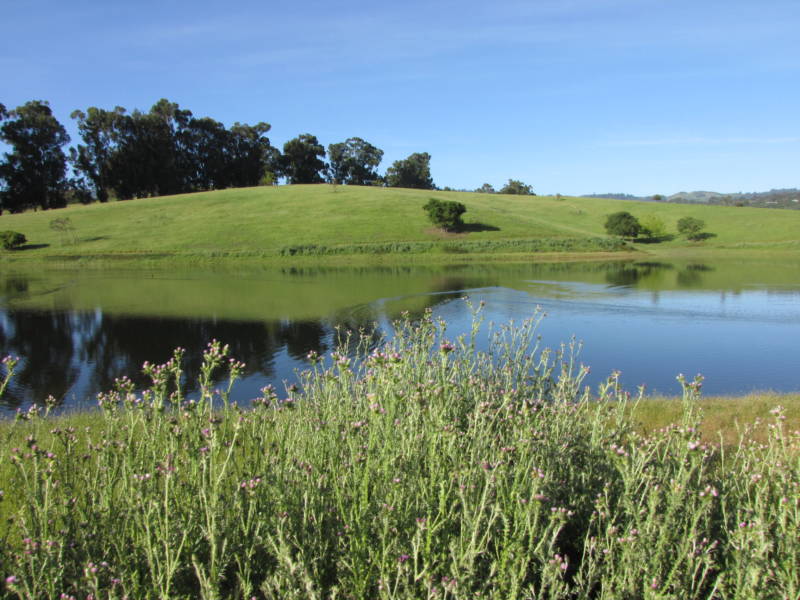
On a recent weekend, a couple of dozen hearty souls hiked more than 20 miles across the sprawling lands of Stanford University, to learn about global warming and see first-hand how the changing climate is affecting the campus. It was the fourth annual “Walk the Farm” outing, a trek organized by the Bill Lane Center for the American West and led by its Executive Director, Jon Christensen. Each year, the hike takes a different route through Stanford’s more than 8,000 acres, and is designed to use the university as a microcosm for a different global theme. This year’s was climate change.
Throughout the 12-hour day, Stanford researchers joined the hikers to talk about the effects of climate change on the campus and region, as well as the related research taking place at the university. Biology professor Carol Boggs spoke about her research on the Bay checkerspot butterfly, its extirpation in the region, and plans for a possible future reintroduction of the species on campus. Other presenters included climate scientists Chris Field and Steven Schneider, and biologist Scott Loarie.
Watch this six-minute video for an overview of this year’s Walk the Farm hike and highlights from some of the talks along the way:
Hear more from Carol Boggs about the Bay checkerspot butterfly:
Scott Loarie explains how a rapidly changing climate is posing challenges for species migration in the video below:
